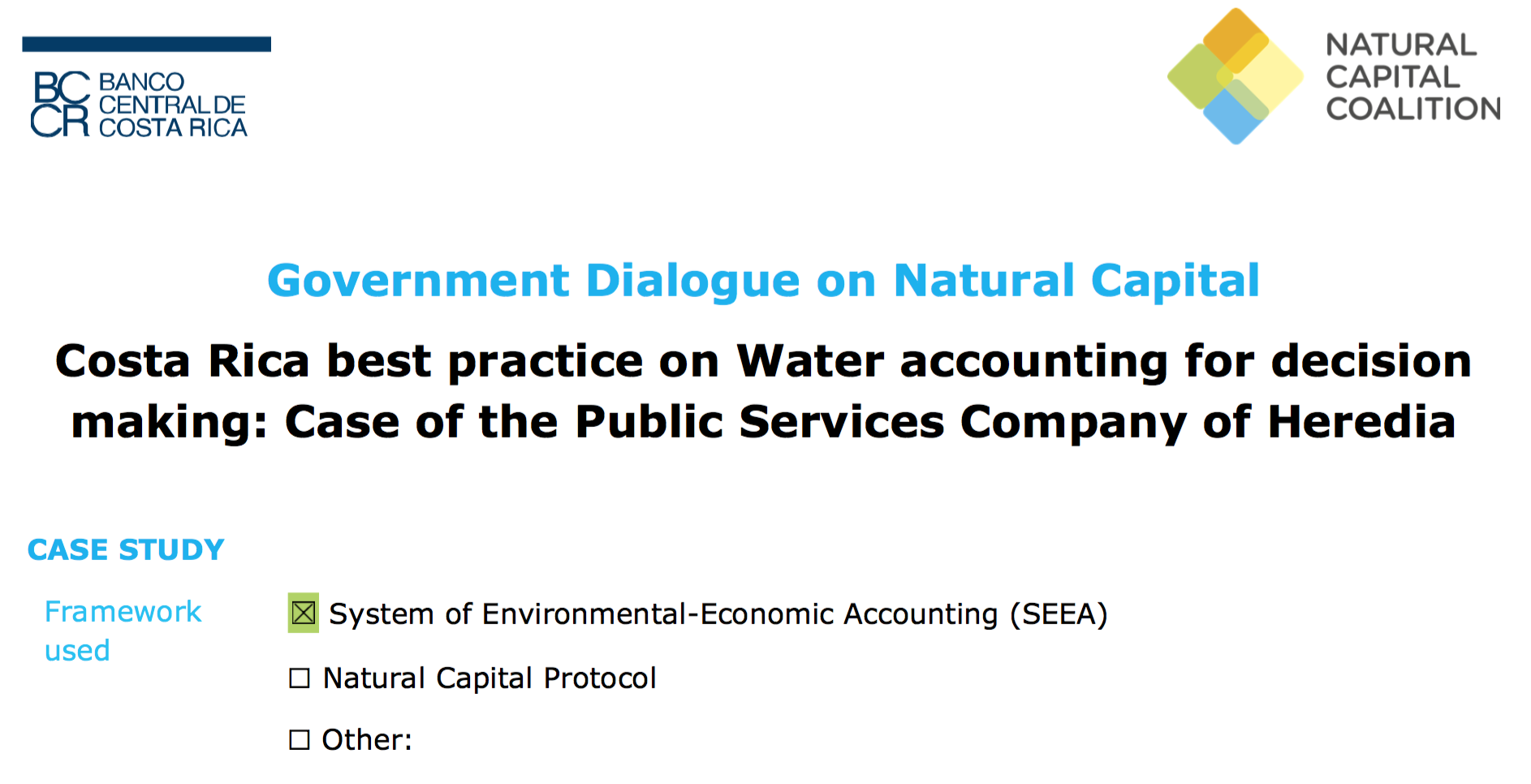The organization/ department in brief
The Central Bank of Costa Rica is the entity in charge of developing the national environmental accounts of Costa Rica. Since 2016, the Central Bank has developed accounts for water, forest and energy following the methodology of the Central Framework of the System of Environmental-Economic Accounting (SEEA-CF). The Central Bank also developed a case study for one of the water operators of the country, namely the Public Service Company of Heredia. The case study consisted of the development of a water account for the company.
Why was this undertaken?
This case study was developed because of the willingness and interest that the Public Service Company of Heredia showed in having a water account. The high level of statistical information of the company was also a key factor for the case study. The original idea conceived in the Central Bank was to develop: (i) a water account study for an urban sector (i.e. the Public Service Company of Heredia case study) that would show water use for human consumption and for industries; and (ii) a water account study for a rural sector, more focused on water use for agriculture (this study has not been published yet). Specifically, the Public Service Company of Heredia was interested in the use of the outcome of this study for decision making.
What was the scope?
The geographic scope of the case study was the same as the geographic coverage of the water distribution service of the company, which comprises the following cantons (administrative units) of Heredia: Heredia, San Rafael, San Isidro, Barva, and Flores. The water account includes supply and use tables, emissions account, monetary data combinations and sequence of monetary accounts for all the economic activities of the Public Service Company of Heredia.
What was the role of the Government?
Representatives from the Ministry of Environment and Energy, the Ministry of National Planning and Economic Policy, and the Ministry of Finance of Costa Rica, together with representatives from the Central Bank and the National Statistics Office, created an ad-hoc committee in order to promote environmental accounting in Costa Rica. This committee, which has now been formalized as the National Council of Environmental Accounts, was created to recommend, define and approve guidelines and approaches for the implementation of environmental accounts. Thanks to this joint effort, in-situ capacities were developed in Costa Rica on environmental accounting. As a result, the first environmental accounts of Costa Rica were published in 2016. That same year, the case study of the Public Service Company of Heredia was published.
What were the results?
The result was the development of an exercise of a water account for the Public Service Company of Heredia. Due to the fact that the company is small and only operates in one province of the country, it was possible to measure more flows than one can measure for the national water account. The available information is more detailed than the one reported in the national environmental accounts, e.g. all information for the Public Service Company of Heredia was classified by International Standard Industrial Classification (ISIC) code.
The account was developed with the collaboration of Public Service Company of Heredia personnel, and it was then presented to the general manager of the company as well as to other high level officials, to explain the main results. As a result of this case study, the Public Service Company of Heredia noted the relevance of classifying its commercial information by ISIC code. Currently they have established an agreement with the National Statistical Office in order to create capacities within the ESPH to classify their business costumer database by ISIC code.
Next steps
The Public Service Company of Heredia has recently shown interest in updating the case study, which means that they have interest in the potential uses of the accounts and the analyses that can be undertaken from it.
In addition, the Central Bank is working on the completion of the case study for the rural area in order to publish it.
Other comments
The results for the case study were published in Spanish. However, a brochure in English that summarizes the mail results of the case study can be found in the website of the Central Bank. The information is available in the following link.













